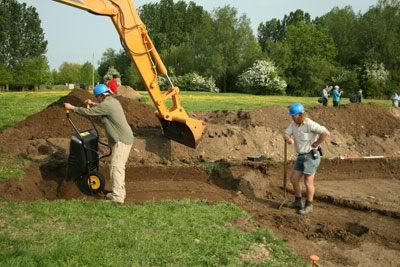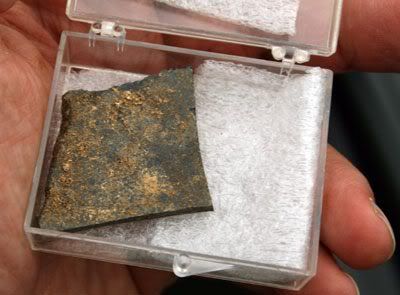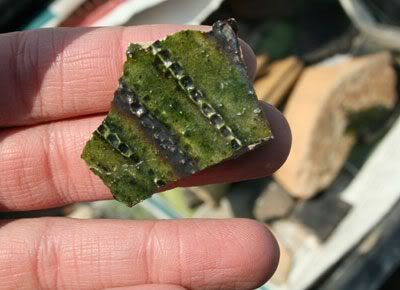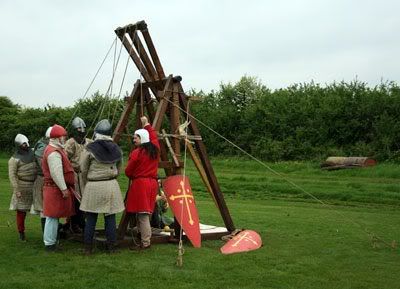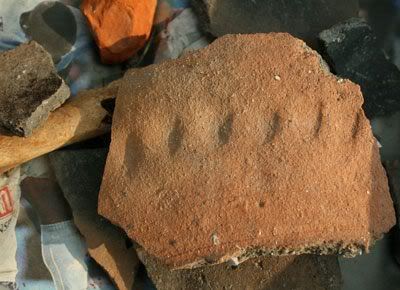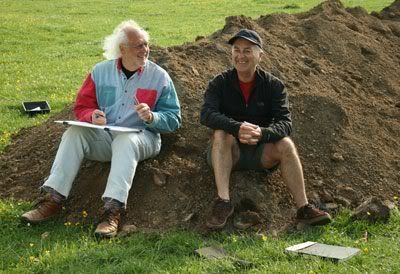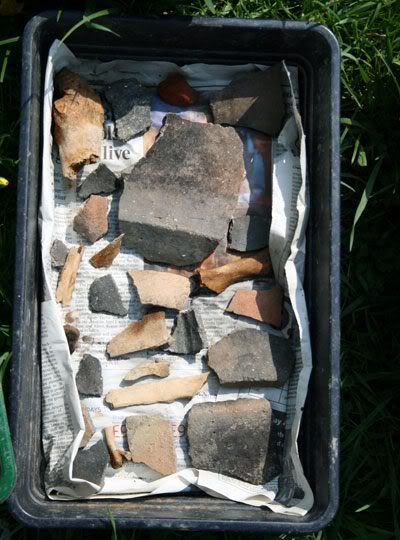Time teams dig at Radcot

Radcot, Oxfordshire First screened 15 February 2009 In this section: Radcot home | What they found | Medieval siege engines | Find out more | Gallery | More 2009 programmes ›› What they found The tiny hamlet of Radcot in Oxfordshire stands on a strategic crossing on the river Thames. Competing armies have fought over control of the crossing from at least medieval times through to the English Civil War. Time Team was invited to the site by two local archaeologists who had carried out their own geophysics survey and thought they might have found a Norman castle buried under what is now a peaceful field. Professor John Blair, of the University of Oxford, and geophysicist Roger Ainslie joined the regular Time Team crew to see what might lie beneath the turf and flowering buttercups. Roger's survey had revealed what appeared to be a keep, an enclosure, a possible gatehouse and lots of other buildings. At first, he and John thought they might be looking at second world war defences, but when they dug a test trench they found a large wall, almost four metres wide, made of mortared rubble. The Norman chronicle Gesta Stephani, about the reign of Stephen, referred to Matilda, one of the grandchildren of William the Conqueror, having fortified Radcot in 1142. This was during 'the anarchy', when the country divided into conflicting camps supporting Stephen or Matilda after the death of William II. Radcot, 'a village made inaccessible by water and blocked up by marshes', according to the chronicle, would have been an important base for the competing armies. The existence of the castle, however, had been forgotten – until now. 3D picture While Time Team's own 'geofizz' people carried out further survey work, including detailed ground-penetrating radar to provide a 3D picture of structures under the surface, Phil Harding opened the first trench on top of the likely keep. He quickly found the first piece of pottery; to his and Mick Aston's surprise, it was Roman. It was clear that this was not going to be a simple, single-period site. And it soon became apparent that as well as earlier Roman use of the site, much of what remained of any Norman castle was overlaid by extensive earthworks and other structures from the English Civil War. Disentangling the remains from the different periods was to take up the whole of the three days. Civil War fort It turned out that a Civil War fort built by the Roundheads when they besieged a Royalist force in the adjacent Radcot House had obliterated a large chunk of the Norman archaeology. So little was left of the gatehouse, in Trench Two, which was cut through by a Civil War ditch. Likewise, in Trench Three, all that was left of what was thought to have been a medieval chapel (and possibly a Roman structure before that) were 'robbed-out' walls and a thin line of stones to what could have been a drain. A fourth trench over an earthwork, again dated by pottery finds to the Civil War, identified it as part of a large fort covering almost half of the field. Its northern ramparts would have been studded with cannon to fire on the royalists holed up in Radcot House. Castle keep Even the keep, so clearly visible on the geofizz, only just escaped obliteration by the Civil War fort, with a large ditch cutting across right next to it. Here the excavation revealed a cross wall on the interior of the keep, which was added later than a central pillar built at the same time as the main walls. The archaeologists speculated that this cross wall, which showed signs of having been added in a hurry, may have been part of Matilda's fortifications as Stephen's army approached. At any rate, the keep didn't survive for long. Pottery finds suggest it was demolished towards the end of the 12th century, having been built barely a hundred years previously. Find of the dig A metal detectorist's search of spoil from the adjacent Civil War ditch, meanwhile, revealed the find of the dig. This was a pewter goblet, marked on its base with the initials I (or J), A and W. In this form, such markings usually refer to a husband and wife – perhaps John and Ann, the most common names of the period. Finally, in Trench Five, Brigid Gallagher uncovered the remains of what may have been the castle kitchen; and in Trench Six the Team revealed what was once a Roman boundary ditch.
Medieval siege engines For the Radcot programme, Time Team called in a living history re-enactment group to demonstrate how a trebuchet would have been used to hurl objects at or over the walls of a defended castle. Re-enactor John Jay Phillips explained how the trebuchet his group used could hurl a two to three-pound stone between 150 to 175 metres with great accuracy. In the past the objects hurled might have ranged from rocks and rotten carcasses to wasps' and hornets' nests or the heads of captured enemies. For the purposes of this demonstration, however, grapefruit were used, being aimed at a collection of papier-mâché heads made by local schoolchildren. So how were medieval siege engines developed – and how did they work? The projectiles hurled from many early weapons were propelled by the use of either torsion or counterpoise techniques. The former relies on using the power captured in a tense twisted core of ropes. The latter exploits the force created when weight is opposed on a lever. Direct tension is another method sometimes employed, as in a bow or crossbow, but the stresses on a single device such as a bow arm can often prevent construction on a large scale. The ballista The ballista is one of the earliest siege weapons using the torsion method of propulsion and would have first seen action in Britain when the Romans invaded. Looking like a large tripod- mounted crossbow, the two arms of the machine are attached to twisted cores of ropes. As the bowstring is cranked back the rope cores strain to hold increasing pressure. A release mechanism shoots the weapon when the aimer is ready, sending a bolt, or dart, racing to its target over a considerable range. The catapult The second torsion engine is the onager or mangonel (commonly referred to as a catapult). Again the Romans employed these machines. They used them to throw missiles high into the air. Though the size of projectile is relatively small compared to the bulk of the engine, special ammunition-like, ceramic- encased incendiaries could be shot accurately. Both the ballista and mangonel were so successful that they continued to be used through the medieval period long after the Romans had departed. Counterpoise machines The medieval period also saw the introduction of counterpoise machines in which a launching arm pivots on a bar, like a see-saw. Originating on the continent, the perrier and trebuchet (illustrated) could be used to devastating effect. Perrier The perrier is usually the smaller of the two. The initial power is provided by a team of men pulling down on ropes attached to one end. This offsets the weight of the missile in the sling at the other end and levers the arm with such force that the missile is slingshot from the machine. This machine is relatively fast to reset and so has a quick 'rate of fire'. Trebuchet The trebuchet is heavier, bigger and slower to reset. A ballast box provides the downforce on the lever, and by its sheer size and ability this machine proved to be one of the most effective of the engines devised. Apart from the destructive capability of the siege engines, they must also have had a considerable psychological effect on the occupants of a fortress. Imagine watching them being built, knowing what was to come. Impressive examples of all four of these siege engines are on permanent display at Caerphilly Castle, Caerphilly, South Wales.
Click here for more images of time teams dig at Radcot
These sites cover the ox18 area of Oxfordshire England, including the following villages, OX18, Alvescot, Bampton, Black Bourton, Burford, Broadwell, Carterton, Clanfield, Kelmscott, Kencot, Langford, Lechlade, RAF Broadwell, Shilton, Parish Pump, Oxfordshire Events,
